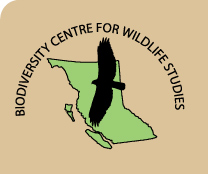Species Vulnerabilities
It is useful to distinguish between vulnerability caused by local rarity and by threat. In each case the species is vulnerable, but it usually is easier to specify management actions when a clear threat is evident. For example, the endemic northern pocket gopher (Thomomys talpoides segregatus) occupied the same small 10-km range in 1997 that it occupied when first discovered 50 years earlier. While the taxon is vulnerable, it is not clear that it is threatened.
Species also may become vulnerable because their population becomes so concentrated that they are at risk to chance events. For example, most of the province's nesting Tufted Puffins may be vulnerable during a narrow window each spring as they aggregate around nesting colonies. Similarly, about 85% of the world population of Ancient Murrelets breeds on Haida Gwaii and gathers in massive staging areas surrounding the nesting colonies as mates exchange incubation duties. During these periods of concentration they are vulnerable to oil spills.
Concentrations may occur during migration. For example, there are relatively few Sandhill Crane staging areas during spring migration within the province, but all cranes passing through the province use them. Such areas can be delineated and potential harmful activities restricted.

Known threats can be dealt with more directly. Potential weak links in the life cycle can be distilled from basic natural history data. For example, the disappearance of the Lewis's Woodpecker from southwestern British Columbia appears to be a product of its dependence on fire-created habitat. Bobolink populations in British Columbia could be aided by eliminating early spring and night mowing. Identifying threats early provides an opportunity to be proactive and preventive, which often is cheaper and more successful.
To see a working list of species and the identified vulnerabilities and threats that exist for those species in British Columbia, click here.






